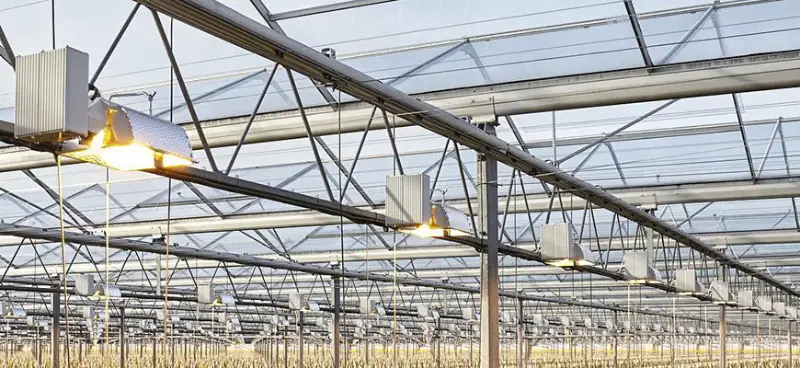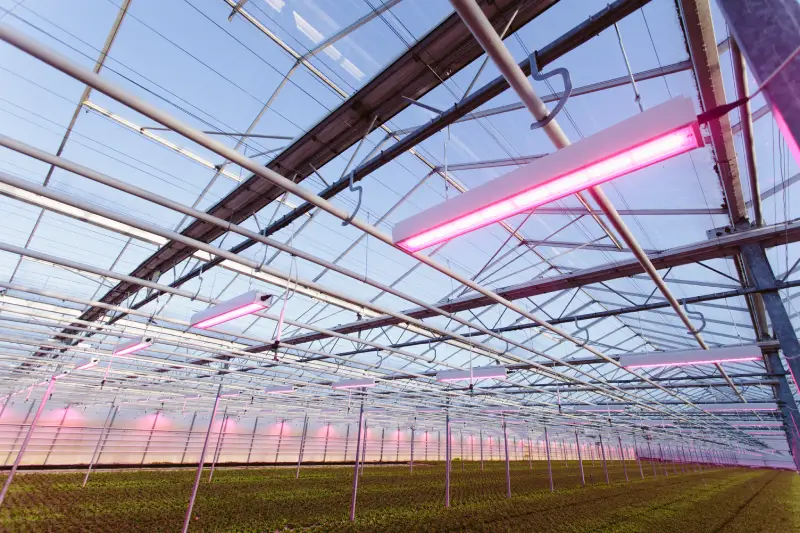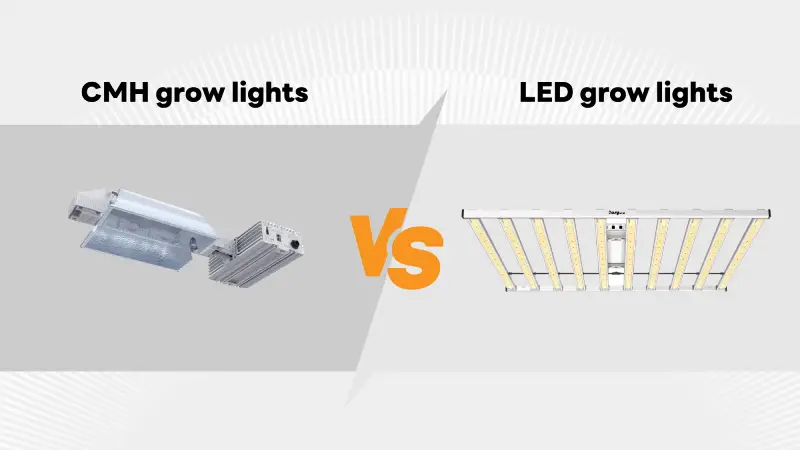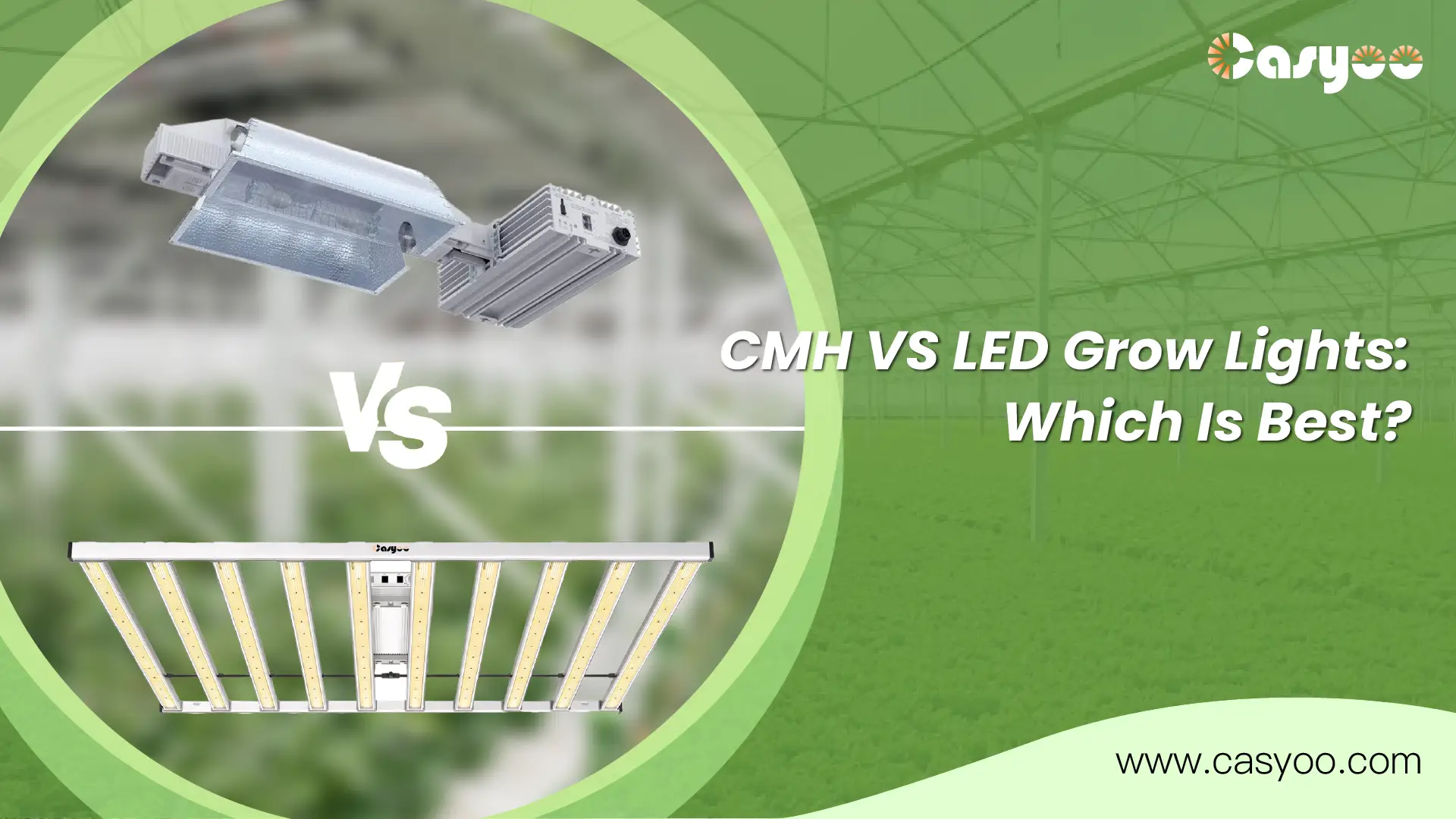Grow lights have been updated to ultra-efficient dimmable and spectrally adjustable LED and CMH grow lights. LEDs offer tunable spectra. CMHs mimic the sun and offer effective UV wavelengths that can strengthen plants against mold and encourage greater resin and terpene production. So, which is better, CMH or LED grow lights?
What is a CMH grow light?

Ceramic metal halide(CMH), also known as ceramic discharge metal halide (CDM) or light emitting ceramics (LECs). CMH lights are low wattage and cover a large area. They entered the market to replace HPS and MH lamps, making them a key player in the CMH vs HPS debate. The biggest difference between CMH and MH lamps is that the arc tube material of CMH is made of ceramic – similar to the material used in HPS fixtures. Compared to the quartz glass used in MH lights, this material is more stable, more resistant to corrosive salts, and able to tolerate higher temperatures.
The best CMH grow light produces a balanced full spectrum, including some UV and IR light. This can increase your plants’ ability to combat mold.
What are LED grow lights?

LEDs work very differently from CMH lamps. Instead of using one long bulb like CMH, LED grow lights are made up of many tiny diodes. Each of these diodes is a set of specific light spectra. LEDs can mix different diodes to produce specific colors.
Some LEDs come in bars, which are ideal for growing in rows, such as growing flowers, vegetables, and fruits in a greenhouse. For growers looking for a more even light distribution and greater coverage, growers could use different wattage of panels.
What are the differences between CMH and LED grow lights?

Spectrum
Plants require different spectra at various growth stages. For example, blue light plays a key role in the vegetative stage, while red light is vital for flowering and fruiting.
CMH lights produce UV and IR light, which is very helpful in fighting pathogens like mold, as well as some pests. Therefore, some people use CMH grow lights for cannabis. When you want red or blue light, you have to change the bulb of the CMH grow light. Of course, this increases the cost.
LED grow lights have evolved to adjustable full-spectrum light, you can switch to red or blue light according to the different growth stages of the plant without changing the bulb, which is very convenient. In addition, LED full spectrum grow lights have a relatively high color rendering index (CRI), which creates a pleasant working environment and makes it easier to assess the health of your plants.
Heat
Since CMH lights produce more heat, cooling equipment such as fans or air conditioners is necessary to prevent the growing space from overheating. Otherwise, it may cause heat stress, plant burns, and even death. In addition, CMH lights should be placed away from plants.
In contrast, LED grow lights do not emit much heat, they can be placed close to plants, and the fire hazard is lower.
Canopy penetration
Canopy penetration is the ability to penetrate the lower part of the crop. Plants require light at all levels to develop well.
If you are growing tall plants with lots of foliage, you will need a plant lamp that can effectively penetrate the canopy to reach the lower leaves of your crops. Typically, CMHs have higher penetration due to their higher wattage ratings.
However, LEDs can also do that because they can be positioned between the canopies and mounted both vertically and horizontally to allow light to reach every area of the canopy. Furthermore, integrated optics on some LED lights’ diodes can significantly improve their penetration capacities.
Ease of use
LED grow lights are incredibly user-friendly. By adjusting a button, you can alter the spectrum and dim the light. And you don’t need to replace the bulbs in different growth stages. Beginners prefer CMH grow lights because of the ease of use. Growers must, however, exert a bit more work because the bulbs need to be changed out at a different growth stage.
Lifespan
LED grow lights lead the way in lifespan, with quality fixtures remaining functional for 50,000 to 100,000 hours—that’s ten continuous years in most indoor gardens. Despite being used at very high temperatures, LEDs keep 80% of their starting brightness for up to 60,000 hours. Their solid-state construction (no filaments or delicate parts) reduces wear, and unlike gas-discharge lamps, they don’t lose longevity from repeated on/off cycling.
Ceramic Metal Halide lighting, although longer-lasting than legacy HID varieties such as HPS, is still less long-lived than LEDs. CMH lamps have a 10,000–24,000 hour average lifespan, so you’ll be changing them every 1–2 years in an intensively used situation. Lumens and colors fade due to electrodes and chambers slowly deteriorating over their lifespan.
Startup time
LED grow lights are instant-on—no delay, no flicker. The second you turn them on, they’re at full brightness with stable light output. With instant-on capability, you can program lighting to the second, conserve energy by not having to factor in warm-up times.
CMH lamps do warm up, though—typically 5 to 15 minutes to full intensity. They cannot be instantly powered back up when switched off and require time to cool down. That translates to irregular light for your crop, energy wasted in warm-up time, and additional maintenance from power cycling wear.
Energy efficiency
LED grow lights are more efficient at converting electricity into usable plant light at approximately 2.5 to 3 μmol/J versus 1.43 to 1.8 μmol/J for CMH. What this means in real terms is that CMH systems require a minimum of 15% more power to provide the same intensity of light—charging you more on your electricity bill.
LEDs also operate cooler. While CMH lights lose a lot of their energy as heat in the infrared, LEDs give off less wasted heat, which relieves stress on your air-conditioning and heating system. Some high-grade LED cooling platforms recover the wasted heat and use it for more effective cooling.
Cost
The initial cost of LED grow lights is generally 1.5 to 3 times more compared to CMH systems, but LEDs give more in the end. LEDs also last much longer—while a CMH bulb might need to be replaced every 1–2 years, a high-quality LED fixture will just keep on going for 5 to 10 years with hardly any upkeep, saving you cash on replacements. In addition to that, LEDs are also around 15% more efficient in their daily running costs, which translates to enormous savings over the longer term.
CMH vs LED grow lights application comparison table
Which type of grow light you should use—LED or CMH—depends mostly on your environment, climate and purposes of using the light. Following is a brief side-by-side LED vs CMH comparison to help you decide what’s best:
|
Use Case |
Recommended Light Type |
Reason |
|
Short-term grows / limited budget |
CMH |
Lower upfront cost |
|
Long-term operations (3–5+ years) |
LED |
Longer lifespan and energy efficiency |
|
Tall spaces / good natural ventilation |
CMH |
Strong penetration |
|
Low ceilings / need for precise climate |
LED |
Compact size, better for tight spaces |
|
Cold climates |
CMH |
Provides useful radiant heat, can assist with space heating |
|
Hot or tropical environments |
LED |
Generates less heat, reduces HVAC load and cooling costs |
|
Need for precise spectral control |
LED (full-spectrum or tunable) |
Adjustable spectrum |
|
Focus on flavor or terpene content |
CMH (or LED with supplemental UV) |
CMH emits natural UV; may enhance secondary metabolites in crops |
CMH vs LED grow lights: final thoughts
The kind of grow light you select will also depend on your cultivating plants. Foliage producers can benefit from CMH grow lights since they can generate full-spectrum light, which includes a significant amount of blue wavelength. For flowering and fruiting plants, LED grow lights are a wonderful option because you can alter the spectrum to create a lot of red light.
All in all, both LED and CMH grow lights are beneficial for your crops. In general, CMH grow lights are an excellent tool for novices to start growing indoors, whereas LED grow lights can be more appropriate for more seasoned producers. But whichever fixture you choose for your plants, the results will be nutritious harvests. If you are looking for LED grow lights, look no further than us!




